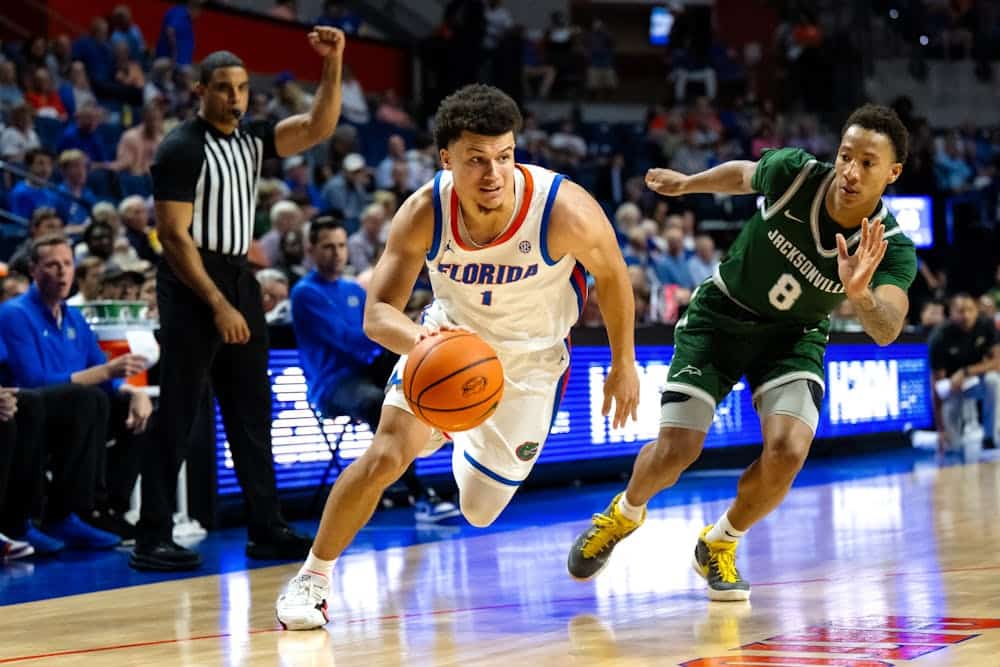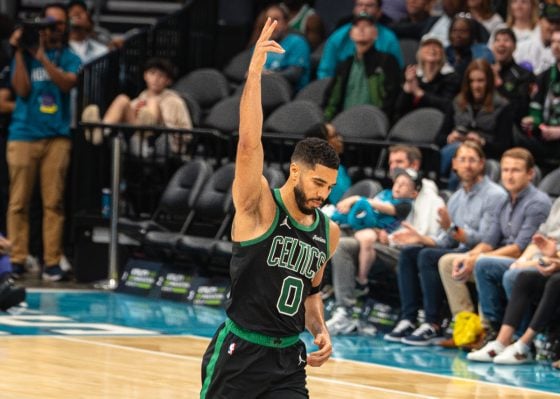Key Highlights
- Kyrie Irving is averaging 21.8 points (59.6 percent true shooting), 5.3 assists (2.5 turnovers), 4.1 rebounds and 1.3 steals in the playoffs
- The Dallas Mavericks are 29.5 points better per 100 possessions with Irving on the floor
Early in the fourth quarter of Game 5 between the Dallas Mavericks and Oklahoma City Thunder, Luka Doncic swirled the ball between his legs and surveyed the scene, awaiting a screen from Kyrie Irving. As Irving planted himself perpendicular to Doncic, the Slovenian sorcerer rubbed shoulders with his teammate, forcing Luguentz Dort no chance to fight over the top and stay attached. Instead, Dort railroaded through Irving and picked up a foul.
After the dead ball, an undeterred Irving set another burly pick on Dort and prompted a favorable switch for Doncic. With Doncic posting up the smaller, leaner Cason Wallace, Shai Gilgeous-Alexander lingered into help position, away from Tim Hardaway Jr. in the opposite corner. So, Doncic flicked an overhead skip pass and helped prime P.J. Washington for a spot-up triple. As Washington’s jumper caromed off the rim, Irving tracked it down and directed a tap-out pass to Doncic, who buried the lengthy long ball.
Over the span of 20 seconds, Irving doled out two punishing screens — the second of which helped tilt the defense for a rhythm three — guided an offensive rebound into Dallas’ possession and picked up an assist. None of it involved his usual signature: galavanting drives, slippery, mystifying finishes, transition terrorizing and picturesque shooting.
How Is Kyrie Irving Starring In The Playoffs?
The 2024 version of Irving is a blend of both sides: a grizzled 32-year-old back in the conference finals after a seven-season hiatus who relishes the glitz of eye-popping offense and the grunge of glue-guy responsibilities.
Averaging 21.8 points (59.6 percent true shooting) and 5.3 assists in 13 playoff games, the highlight-filled scoring flurries and offensive bonanzas still persist. But they are a complement to all Doncic provides as the Mavericks’ indomitable engine more than a co-star’s skill-set shining every trip down the floor.
When those traits are lurking in the shadows — awaiting their necessary moments in which Doncic is resting or bottled up by the many limbs and eyeballs tracking him — Irving continues flourishing like any esteemed role player would. Through three rounds, he has taken on James Harden, Jalen Williams and Mike Conley Jr. as his primary assignments.
For long stretches, he applied backcourt pressure to Harden, chewing up clock, disrupting some of the wily veteran’s flow and reducing the margin for error each possession — an especially useful tactic, given the slow-burn nature of the Los Angeles Clippers’ offense.
He wrangled with Paul George, sitting under the sweet-shooting wing’s nose, curtailing meager drive attempts and inducing cumbersome shots. In the following round, he also guarded Shai Gilgeous-Alexander.
Irving assuming — and crushing — all these duties has been integral for the Mavericks. While they’re totally comfortable letting Washington assert himself at the point of attack, they prefer his size and instincts to hover in driving lanes, around the hoop and plug gaps as a helper. Irving prospering alongside Derrick Jones Jr. on the ball has allowed Washington to maintain that role more often than not.
No matter the player, he’s knifing through screens, getting into the chest of ball-handlers and withstanding physicality, while simultaneously dishing it out himself. He’s sliding his feet, absorbing contact with his torso and keeping active hands to interrupt shooting, passing or dribble windows (14th in deflections per game these playoffs).
This isn’t some case of grading on a curve for a star, score-first guard. Irving has been legitimately good and a bright positive at the point of attack for Dallas’ frisky, championship-caliber defense.
Astute off the ball, the 32-year-old isn’t confined to a singular task. He’s denying handoffs, hurling himself into contests, boxing out big men, mucking up musings on the weakside and constantly nailing whatever details are left to punctuate a stout possession.
Irving may not be the linchpin for the Mavericks’ defense. Yet his complete willingness to embrace all this and do so with such a grand, multifaceted effect helps ensure everywhere opposing offenses turn is met by a dead-end. Playing against Dallas is like being plopped into a neighborhood of endless culdesacs. There’s no escape hatch — not even in the form of a 6-foot-2, 195-pound guard.
During the first round, the Clippers often blitzed Irving or stationed their big around the level of the screen. The intent was to coax the ball out of his hands, gauge the scope of his playmaking and force him to contribute primarily as a passer. Early on, it seemed to bog him down (18 assists, 13 turnovers through four games), but it’s ultimately prompted him to adapt. He’s processing the added attention with precision and haste. Since then, he’s recorded 51 dimes to 19 giveaways
Dallas dials up a lot of Irving’s creation from the wings, particularly in early offense, and those empty corner sets make it easier for him to get downhill. But he’s also snappy wandering off the ball into space or ripping off the catch, regularly commanding the size on the court into his domain before whirling feeds to Daniel Gafford and Dereck Lively III for sprightly finishes.
Opponents are rarely conceding drop or switches to him and he’s nonetheless proven adept at winning these battles to dance how he pleases.
Stylistically, one of the most jarring differences between Irving and Doncic is their utilization of pace. Irving is a jitterbug operator, a lightning bolt of a player, pinging from spot to spot before the defense has corralled him. Doncic is methodical, content to let the defense see his location, confident it’s irrelevant to their odds of slowing him.
For years, the Mavericks molded to the preference of their franchise superstar, ranking bottom three in transition rate his first five seasons and bottom five in transition transition efficiency four of those seasons. With Irving around for a full campaign, that shifted. They finished 13th in transition rate (13.2 percent) and 12th in transition efficiency (1.29 points per possession) — both high-water marks of Doncic’s career.
Although Irving pushed on his own, Doncic displayed a newfound penchant for full-court outlets and hit-ahead passes to ignite fast breaks. Sometimes, he even led the charge himself. But most commonly, he was catalyzing easier offense without crossing into a new frontier on the speedometer.
That’s all translated to the playoffs. Irving is averaging 1.35 PPP in transition (72nd percentile), while Dallas is collectively generating 1.37 PPP (fourth among 16 playoff teams). He’s spraying home pull-ups. He’ll leak out for touchdowns. He’ll zig-zag through defenders to the rim. His relentless breakneck ethos has caused significant problems for Los Angeles and Minnesota, and Oklahoma City didn’t avoid damages either.
Irving’s approach appears symbiotic with Doncic, who’s embraced working off the catch more, a greater propensity to operate in transition and is playing the sturdiest defense of his career. Doncic’s development shouldn’t be attributed to Irving, but the adaptations from each star to maximize this partnership reflects kindly upon both.
Doncic has tweaked his game to mirror his running mate’s a bit more. Irving has accommodated Doncic by threading far less of his impact to the points column. Together, they have Dallas three wins from its first Finals appearance in 13 seasons. A wunderkind offensive orchestrator flanked by his malleable backcourt buddy.
Eight years ago, Irving summited the mountain as a dazzling sidekick scorer who canned the loudest shot of the series. Nearing that mountaintop again meant reinventing himself, so he became a do-it-all sidekick who dazzles however the situation warrants. He revels in this backseat because it doesn’t grant him less space to thrive, it’s merely altered how he thrives, and he’s perfectly OK with that.






